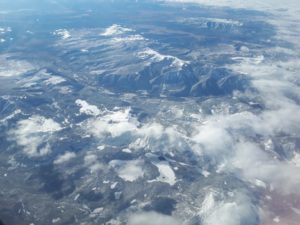 A couple of weeks ago I travelled to Salt Lake City in Utah. Salt Lake City was established by the Mormons (or Church of Jesus Christ of the Latter Day Saints) in 1847 when their leader, Brigham Young, led many Mormons away from persecution in Ohio, Missouri and Illinois, westwards on an arduous journey towards Utah. Today Salt Lake City is 50% Mormon.
A couple of weeks ago I travelled to Salt Lake City in Utah. Salt Lake City was established by the Mormons (or Church of Jesus Christ of the Latter Day Saints) in 1847 when their leader, Brigham Young, led many Mormons away from persecution in Ohio, Missouri and Illinois, westwards on an arduous journey towards Utah. Today Salt Lake City is 50% Mormon.
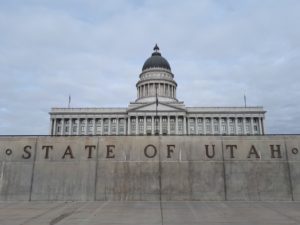
I have met some Mormon missionaries in the UK – usually smartly dressed white American men always operating in pairs – proselytising about the Mormon church. However, I’d never visited Utah before. When I travel to new places I try to read books about the area in order to immerse myself more deeply in learning about somewhere new.
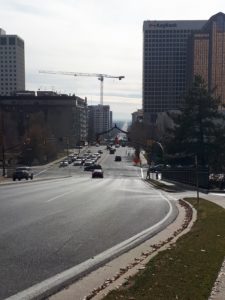
So as I flew to Utah, I was reading with interest, *Jon Krakauer’s book Under the banner of heaven, which is a study of the Mormon Church’s history and practices in Utah and neighboring states. The book is pretty hard-hitting and made me somewhat nervous of my visit to Utah. The book highlights many Mormon beliefs and behaviours at odds with the law, namely: violence metered out against non-believers; white supremacy; gender and sexuality discrimination and oppression; polygamy; incest; and paedophilia.
 Jon Krakauer is clear that his book was not received well by the Mormon church – and it’s easy to see why. Krakauer’s book tends to focus on some of the violent episodes in the history of the church and on the minority fundamentalist groups that have broken away from the mainstream church at different stages. Salt Lake City is 50% Mormon.
Jon Krakauer is clear that his book was not received well by the Mormon church – and it’s easy to see why. Krakauer’s book tends to focus on some of the violent episodes in the history of the church and on the minority fundamentalist groups that have broken away from the mainstream church at different stages. Salt Lake City is 50% Mormon.

My first impressions were of a city in a stunning situation surrounded by the Wasatch mountains; it is breathtakingly beautiful. I had a day to explore and I took the opportunity to walk up to the State Capitol Building, as well as to explore the buildings in Temple Square, where the Mormon Church Administration building is, the Tabernacle, the Temple, the Beehive House where Brigham Young lived, and the Lion House where some of Brigham Young’s wives lived (he is alleged to have had 57 wives).
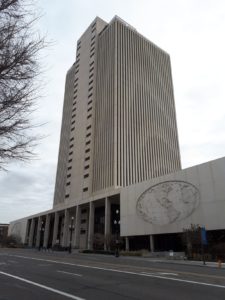
Many of the buildings were not open to visitors, but the tour of the Beehive house was fascinating. The delightful tour guide took a group of 8 of us around the house (I was the only non-Mormon). According to the guide, Brigham Young took 57 wives, not to procreate, but allegedly to be kind, in looking after women who had been widowed – although he did also have 57 children. Those church members I spoke to in Temple Square argued strongly that the list of behaviours I’ve mentioned above that Krakauer focuses on, only apply to fundamentalist Mormons who are outside of the mainstream Mormon church and indeed, one woman spoke of how angry she gets at the bad press the mainstream Mormon church gets because of some of the practices of fundamentalists. Indeed, the distance between fundamentalist Mormon beliefs and US law related to polygamy has led to some fundamentalist groups living over the border in Mexico and Canada.

After visiting Temple Square, later in the afternoon, my colleague Peter Felten arrived and we realised that our hotel was next to a large sports arena where there was an NBA basketball game to be played that evening. So we got hold of some tickets for a game between the Utah Jazz and the Minnesota Timberwolves. It was my first NBA game with a brilliant atmosphere.

Peter’s son, Timothy had recommended we go to the game as the two teams were likely to be well matched. Sure enough it was a very close and exciting game, but to the disappointment of the Utah home crowd, the Minnesota Timberwolves won. We did have the advantage of walking home one block from the game while we watch lots of other people sitting in traffic jams trying to set off home.
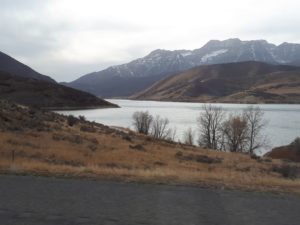
The following day we drove through the mountains to Park City, a ski resort in the Wasatch mountains above Salt Lake City. The views were stunning and we enjoyed wandering around the resort, out of season – they are expecting snow for the next 2 weeks and the skiing will soon commence. We met one of Peter’s cousins for lunch before heading to visit Sundance – of Sundance Film Festival fame. Sundance was founded by Robert Redford in 1969 (for his name sake in the film Butch Cassidy and the Sundance Kid – outlaws who roamed around this area of Utah) and he has worked hard to ensure the area has not been over-developed.
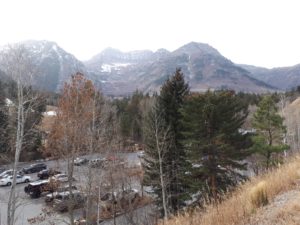
We moved on from Sundance to Provo, where we were spending the next few days. Provo (which is 85% Mormon), is the setting for Brigham Young University, a Mormon University where Peter and I were running a couple of workshops on undergraduate research and experiential learning. Over the next few days we were looked after very well by our hosts who were all delightful. We noticed some obvious differences to our campuses, in the lack of coffee (including decaffeinated coffee) being served as Mormon’s don’t usually drink coffee/caffeine. Also at the restaurants in the evening, you could ask for the alcohol menu, but this wasn’t generally given to you at the table, as Mormon’s don’t usually drink alcohol. Other noticeable differences included prayers before the start of the conference and before conference meals. There was also a good deal of attention by colleagues to embedding Mormon doctrine into the educational developments we were discussing.

We had some excellent conversations with colleagues and our workshops went well. We used the most recent EngagEd in… guide that we produced at the University of Edinburgh – EngagEd in… research led learning and teaching – as the basis of our workshop, and it was very well received. We came away reflecting on many aspects of our time in Utah and the benefits of visiting universities distinctly different from our own.

We were treated very warmly and left with the challenge of trying to align Jon Krakauer’s book to our positive, but short experience of Utah. I didn’t ask anybody about what they thought of Krakauer’s book, but I can imagine many Mormon church members would feel it is unfair and paints an overly negative picture of the mainstream Mormon church, but Krakauer and others might argue that perhaps the mainstream church is keen to put behind them any violence or unpalatable elements of their history. I can’t hope to understand the complexity of history and the Mormon faith in one short visit, and through the reading of one book. Ultimately, we were very glad to have had a chance to get to know more about Brigham Young University, to meet good colleagues there, and to have a short introduction to Utah.


